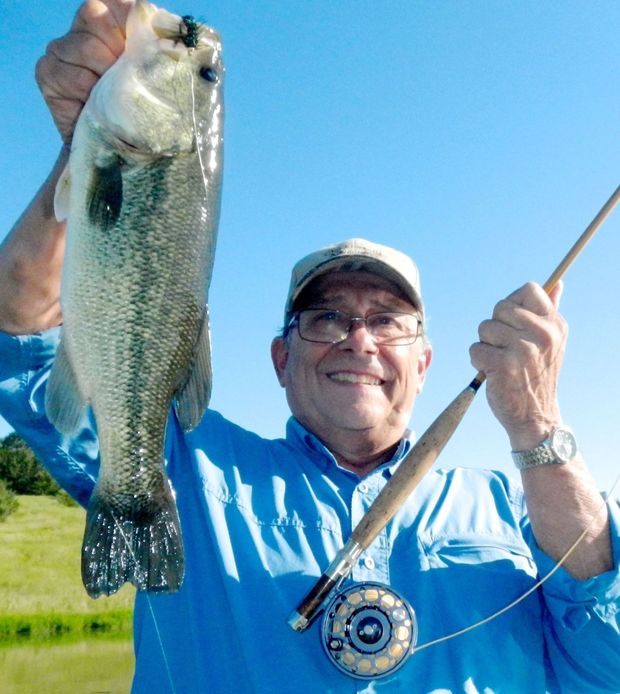As mentioned in previous columns, I’m counting the days until the weather warms up and the ice is off the water.
It may be a little early to talk about bass, but I believe in being ready when the time comes to fish open water.
Once the water opens up, some anglers have tunnel vision and think only of walleye fishing on the river or lake.
Those folks that are always thinking walleyes are missing some truly great early season fishing with some of the finest bass fishing found in most bodies of water, including the small and larger bodies of water happening on the Missouri River, in stock dams and farm ponds that are scattered throughout the upper Midwest.
Bass will be ready to spawn as the surface water temperatures reach approximately 64 to 68 degrees, when the fish move shallow to depths from two to ten foot of water to create their spawning beds.
Look for the bass first to be where there you’d find warmer water conditions, the water that warms up first, a part of the pond or lake, which receives the most sunlight, the northern shoreline, or in darker bottomed areas and bays.
This is where the smaller males will move in to create their beds, they do this by working their tail rapidly across the bottom in a sweeping motion; clearing out a small circular depression, an ideal spawning location and a hiding area for the eggs and later the fry.
Once the male has it constructed, he’ll do his best to coerce a female into the area to deposit her eggs as he fertilizes them.
After she deposits her eggs, the females’ move into deeper water to rest and recuperate, leaving the male to guard the eggs and the young bass as they hatch.
The male swims around the bed, protecting the eggs and fry, as he drives off any intruders that might come into that area.
Since the male are always on guard, they don’t have time to eat, but before he leaves the bed, he’ll have one large meal before he goes off into deeper water.
The final thing the bass will do is to charge around the bed gobbling up as many of the young as he can before the startled young find cover.
It seems cruel for a father to eat his young, when in fact, it may be the way Mother Nature educates the fry, with the males way of showing the small bass, from that point their on their own and need to take care of themselves.
Being a small fish in a big fish world and as the fry leave the bed, they’re fair game to everything in the aquatic world, even their own relatives.
In order to catch the smaller males or large females when their on the bed, you’ll need a lot of patience. It may take you numerous casts until you eventually irritate the fish into biting. Once irritated, the fish will attempt to either chase off the intruder, your bait or pick it up and remove it from the bedding area.
There are many types of bait that will entice the male to bite. They include plastic baits including worms, crayfish, salamanders, jigs, top water or minnow imitating lures. Pitch your bait near their bed or run it over the top of it and if at first you don’t succeed, with the bass ignoring your bait, keep at it, as eventually, you’ll make the fish mad enough and he’ll come after your bait.
As the bass moves to your bait and picks it up, you’ll need to set the hook hard, as the fish isn’t holding onto the bait long, he’s simply trying to get it away from the bed.
Fly-fisherman can have an enjoyable time, fishing the beds as; the bass as well as bluegill will come after a fly. Use slow sinking flies, allowing it descend slowly into their bedding area as bass seem to really take pleasure in hitting this type of presentation.
One thing that you’ll need to keep in mind is that these fish are guarding the young of the year and if you remove them from the nest for too long of a period of time, predators like the bluegills and others will move in and gobble up the eggs or fingerlings.
Fishing for bedded bass can be a great experience, but one that affects the bass population down the road.
Bodies of water, especially small ponds need to have a good Predator-Prey relationship. If you continue to take the predators such as bass from these smaller bodies of water, the smaller prey fish will become too abundant, become predators on the bass beds and you could end up with an overpopulation of stunted panfish.
Without the larger predators to keep things in balance, the smaller prey fish (bluegill & sunfish) will eat all the available food. When this happens, you’ll end up destroying one of your favorite fishing holes
Once you land a bass off the bed, handle it cautiously and after a quick picture, return it back to the water. By doing this, you’re assured that the fishing in the body of water will be better down the road for many generations of anglers to come.
Gary Howey, a 1968 graduate of Watertown High School, now residing in Hartington, Neb. is a former tournament angler, fishing & hunting guide. Howey is an award winning writer, producer, photographer and broadcaster, selected and inducted into the “National Freshwater Fishing Hall of Fame” in 2017, he is the Producer-Co-Host of the Outdoorsmen Adventures television series and Outdoor Adventures radio. If you are looking for more outdoor information, check out garyhoweysoutdoors.com, like Gary Howey’s Facebook or watch his shows on www.MyOutdoorTV.com.






0 Comments